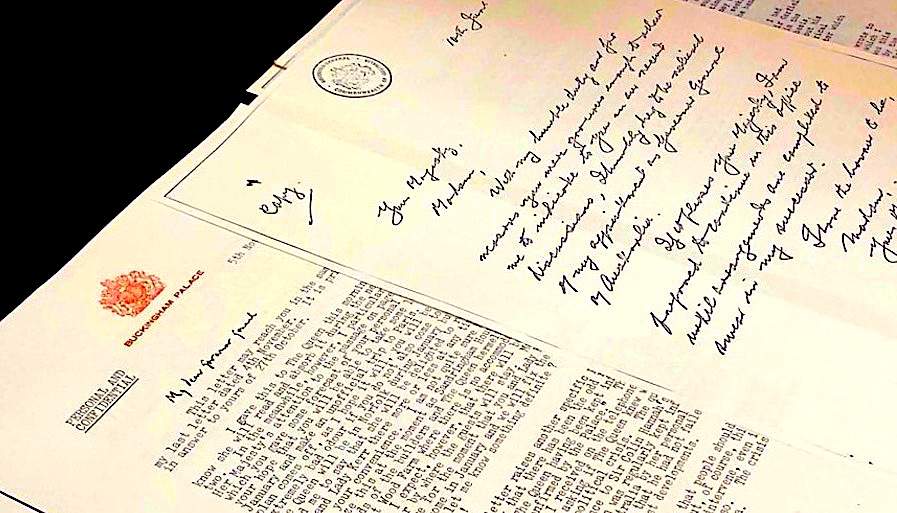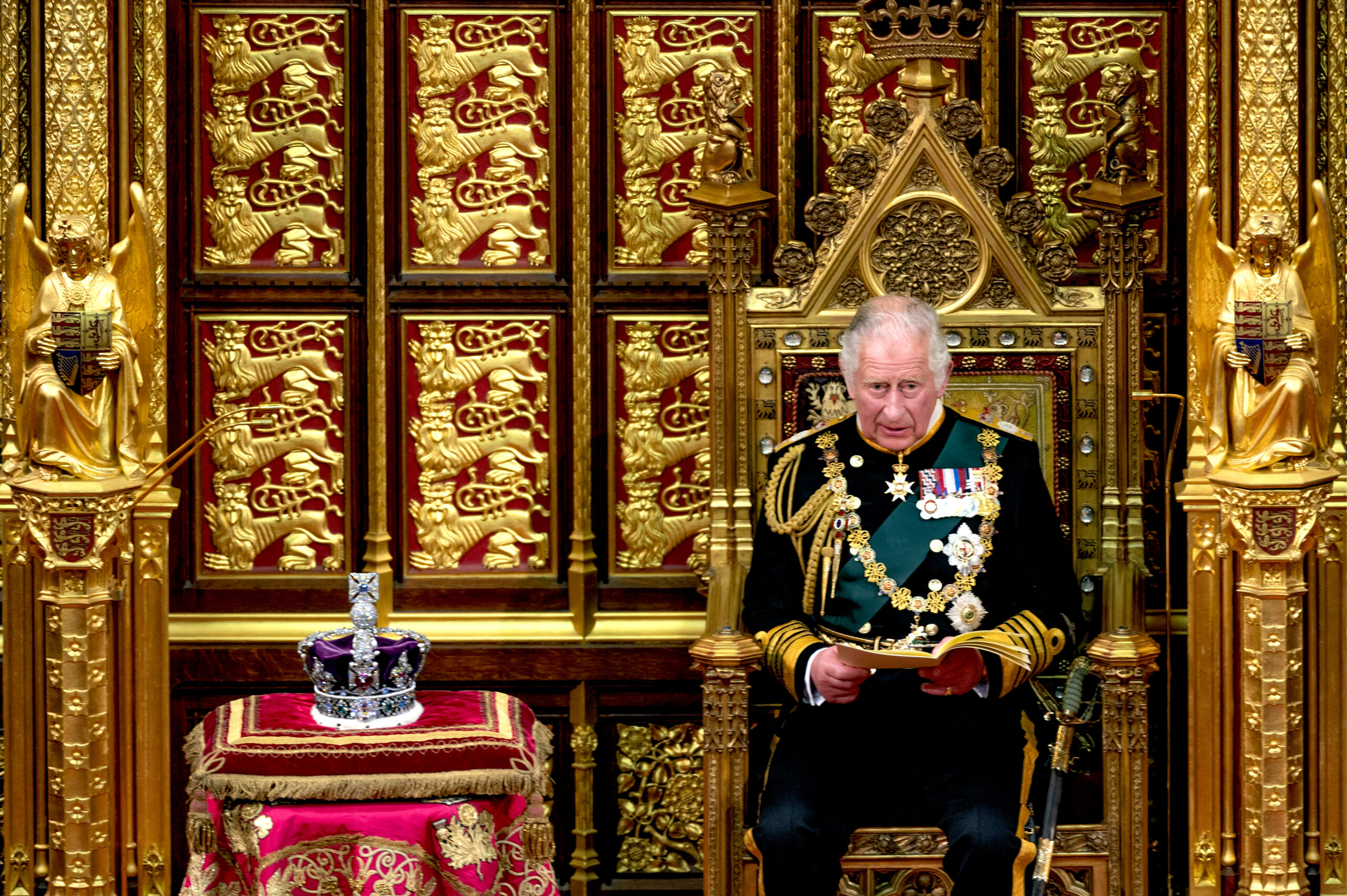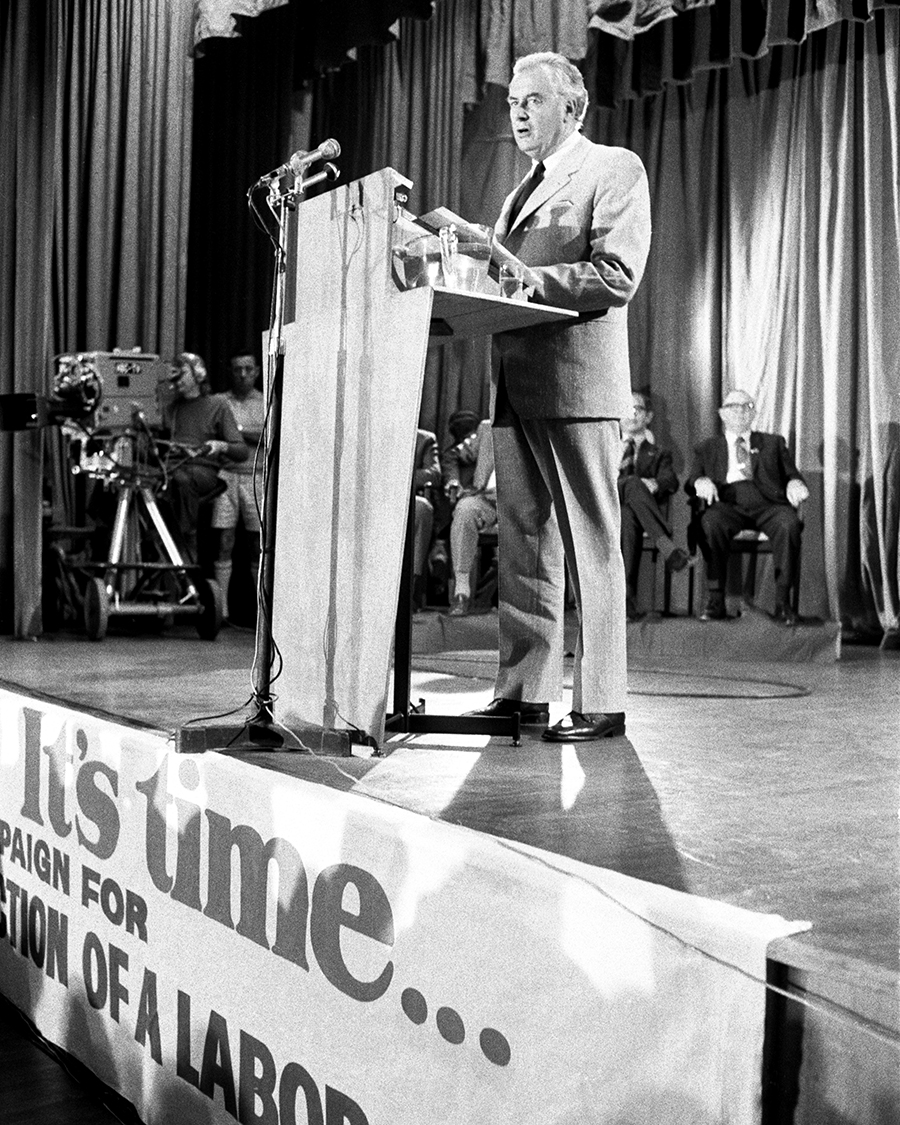By Marvie Basilan Chorawan
11/14/22
KEY POINTS72% of women under 30 voted for Democrats in House races
In several states, a majority of young women also voted for Democrats for senate seats
The overturning of Roe v. Wade has sparked debates on abortion rights
Ahuge percentage of young women voted for Democrats in the midterm elections amid debates over abortion rights in the country. Exit polls showed women under 30 played a key role in crumbling the Republicans' hopes for a "red wave."
Women aged between 18 and 29 went 72% for House Democrats and only 26% supported Republicans, exit polls jointly conducted by CNN, ABC, CBS and NBC showed. A whopping 57% of women aged 30-44 supported Democrats, while only 41% voted for Republicans in the House.
For Senate seats, the majority of women under 30 voted for Democrats. 76% of young women in Arizona voted for Mark Kelly, while 20% voted for Blake Masters. Even Florida, which turned red in the midterms, saw 57% of women under 30 voting for Val Demings.
In Georgia, 63% of young women voted for the Democratic Party's Raphael Warnock, while 34% voted for the GOP's Herschel Walker. In Nevada, 64% of women aged 18-29 voted for Catherine Cortez Masto, while 31% voted for Adam Laxalt.
A similar turnout was seen in New Hampshire, where 74% of women in the 18-29 age group voted for Democrat Maggie Hassan, while 23% voted for Donald Bolduc. The same was the case in Pennsylvania, where 70% of women under 30 voted for John Fetterman, while 28% voted for Mehmet Oz.
"I think most young women feel that the best thing for their rights and for the future of the country is to vote for Democrat," 24-year-old Elizabeth Rickert, from Ohio, told The Hill.
Rickert further explained she thinks younger women believe "voting Democrat is the only path forward" as the GOP "becomes more extreme and moves away from the core American principals of democracy and rights for all."
Some observers believe a predicted "red wave" in the midterm elections was ultimately thwarted by "people motivated by the erosion of abortion rights," Politico reported.
"Had the Supreme Court not overturned Roe v Wade back in June, the Democrats wouldn't have had that to energize voters," Jon Taylor, a political science professor at the University of Texas, said, adding the issue "actually helped the Democrats stave off that Red Wave."
READ MORE
The U.S. Supreme Court overturned the landmark Roe v. Wade ruling that legalized abortion at the national level, triggering a wave of protests. Republicans have been pushing to either completely ban or limit the procedure.
The decision is believed to have played a key factor in the midterms, with concerned young women turning up in large numbers. "Abortion is a winning issue and will continue to be in elections to come," said Mini Timmaraju, president of the nonprofitNaral Pro-Choice America.
Despite the high turnout of young female voters for Democrats, some experts note the extent to which the votes of women under 30 have actually affected the results is unclear and will not be determined until after election results are officially counted.
David Shor, founder of Democratic data analysis firm Blue Rose Research, pointed out that numbers from early voting do not necessarily support the notion that young voters had a very crucial effect on the victory of Democratic candidates, the New York Times reported.
President Joe Biden last week said the turnout of young voters "sent a clear and unmistakable message," that they want to "protect the right to choose."
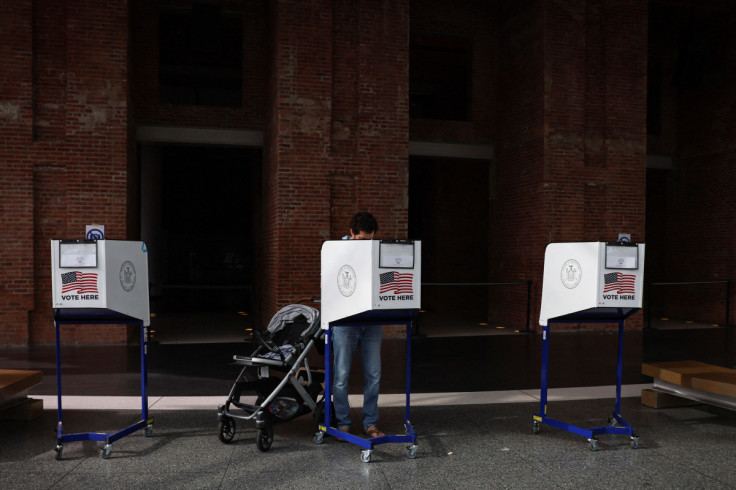
© Copyright IBTimes 2022. All rights reserved.
Concerns about abortion and GOP extremism offset the forces pushing against Democrats.
John Halpin
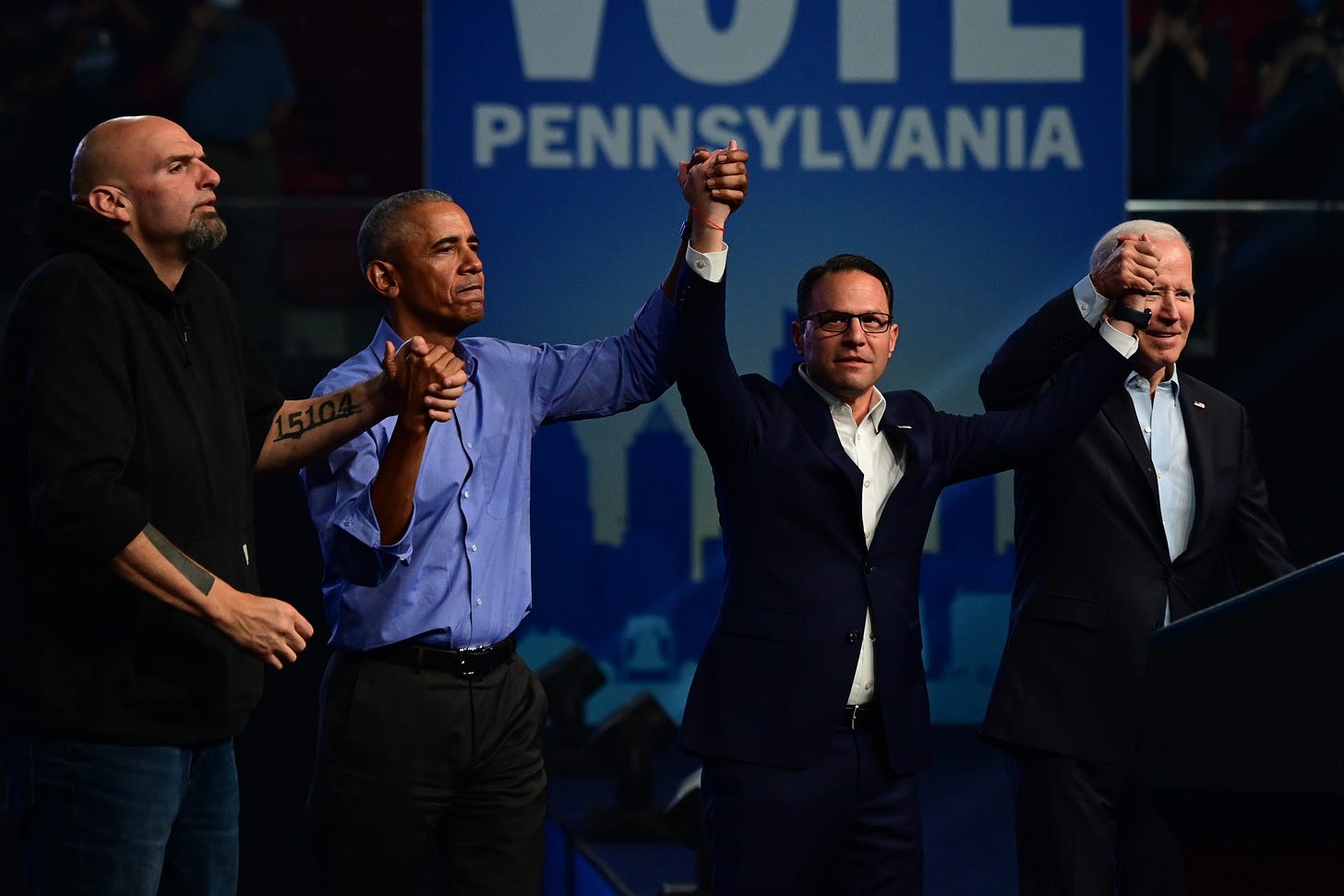
Democratic candidate for U.S. Senator John Fetterman, former President Barack Obama, Democratic candidate for Governor Josh Shapiro, and President Joe Biden raise their arms when departing after a rally on November 5, 2022 in Philadelphia, Pennsylvania. (Photo by Mark Makela/Getty Images)
Although votes are still being counted in competitive races across the country, it looks like the 2022 midterms may produce a narrow House majority for Republicans. With Senator Catherine Cortez Masto’s victory in Nevada, Democrats have successfully maintained control of the Senate and could expand their majority depending on the results in the Georgia runoff. Given the outsized expectations among the GOP heading into Election Day, and the anxiety from Democrats, this will certainly lead to many sighs of relief among President Joe Biden and his supporters.
Facing serious economic headwinds from 40-year high inflation, and sagging job approval for the President and Democrats in Congress, not getting your clock cleaned counts as a partial victory and gives hope to Democrats going forward. This is not a jump-for-joy moment for Democrats but rather a reprieve that gives Biden and his party breathing room to honestly address and fix the party’s multiple deficiencies with working-class voters and Americans living outside of urban areas.
The economy and jobs emerged far on top of issue priorities for voters (47 percent), according to AP VoteCast, and Republicans won two-thirds of these voters. Likewise, in the national exit poll, using a shorter list of priorities, inflation (31 percent) was the top issue for voters and Republicans won 7 in 10 of these voters. However, in the wake of the Supreme Court overturning Roe v. Wade, the issue of abortion ranked a close second for voters in the national exit poll (27 percent), with Democrats winning more than three-quarters of these voters. The interaction of these two issues—the economy and abortion—combined to produce the close results we saw on November 8 with abortion likely offsetting inflation concerns among independent and other swing voters in key districts held by Democrats, and the inverse being true in those taken by Republicans.
Awaiting the final tallies in the House, a few lessons for both parties seem straightforward. For Democrats, being a culturally moderate party committed to the economic well-being of working Americans—with the assurance of basic rights and freedoms for all people—is clearly a winning approach. It worked for Biden in 2020 and it worked for a lot of frontline Democrats this cycle facing off against extremist Republicans.
Democrats must feel good seeing the likes of Abigail Spanberger, Elissa Slotkin, Susan Wild, Matt Cartwright, Gretchen Whitmer, Josh Shapiro, Tony Evers, John Fetterman, and Mark Kelly—all with different personal styles but a similar pragmatic approach—winning in highly competitive environments. Ahead of 2024, President Biden and Democrats need to stay focused on embodying a sensible party brand that is “pro-worker, pro-family, pro-America” and avoid temptations to go off on ideological tangents that undermine a big-tent appeal to the electorate.
Democrats still have a lot of work to do on issues like the economy and crime to get back into the good graces of voters facing multiple stresses over personal finances and community safety. The president and congressional leaders should ignore the left of the party which loudly proclaims that cost of living issues and public safety are fake issues cooked up by the right. In reality, one-third of Americans continue to face serious challenges from rising prices and the high cost of living, and Democrats need to serve as their champions.
On the other side, top-level Republicans will continue to rue the day they turned their party over to Donald Trump, a leader despised by Americans outside of a rump base, and a clear drag on the party’s hopes of building a stable electoral majority at the national level. Although Trump-endorsed candidates like J.D. Vance and Ron Johnson won their races, and results in the Arizona governor’s race are still outstanding, the toxic crew of election deniers and ideological hardliners Trump backed in competitive races lost, including Doug Mastriano in Pennsylvania, Tudor Dixon in Michigan, Tim Michels in Wisconsin, Blake Masters in Arizona, and Don Bolduc in New Hampshire.
Republicans could have posted huge gains in both the House and the Senate but appear instead to have fizzled out after following Donald Trump’s and Rick Scott’s strategy of promoting ideological extremists and conspiracy theorists. Turns out most Americans don’t want a bunch of weirdos in charge of the government, threatening their personal freedoms and democratic elections—a lesson that should be obvious to Republicans by now, but will probably be ignored to their detriment.
Florida Governor Ron DeSantis clearly emerged with the biggest night of anyone, easily winning re-election by a 20-point margin in a state that is now solidly Republican. DeSantis’s successful blend of just-enough-culture war, lots of traditional Republican economics, and opposition to Covid-era restrictions and illegal immigration obviously appeals to many people in this critical state. It’s a post-Trump model that many Republicans will be eager to support given proven successes in Virginia with Glenn Youngkin, and now with Brian Kemp in Georgia and DeSantis in Florida. The 2024 Republican primary battle is sure to be a knife fight should DeSantis seek to take on Trump. Although early odds would put Trump well ahead of others, after this cycle many core Republican voters may think twice about setting themselves up for probable failure again by nominating the former president with the reverse Midas touch.
As analysts continue to digest the results, we shouldn’t lose sight of the fact that American voters are not particularly happy with either political party. Both parties, their congressional leadership, and their current and former presidents are all viewed unfavorably by voters. Billions of dollars of ads in 2022 did nothing to measurably improve the standing of either party—and probably heightened many Americans’ aversion to politics altogether.
The 2022 midterms may produce another era of divided government run by two parties roundly disliked by large proportions of voters. Whichever party chooses to move beyond a strategy of merely seeking to increase hatred for the other side—and instead focuses its agenda and political pitch on advancing the economic and social aspirations of all Americans—will be best positioned for future victories, and possibly, to break out of the country’s chronic political deadlock.
[Editor’s note: An earlier version of this article originally appeared in Persuasion, a great Substack publication dedicated to civil discourse and the defense of free societies.]

